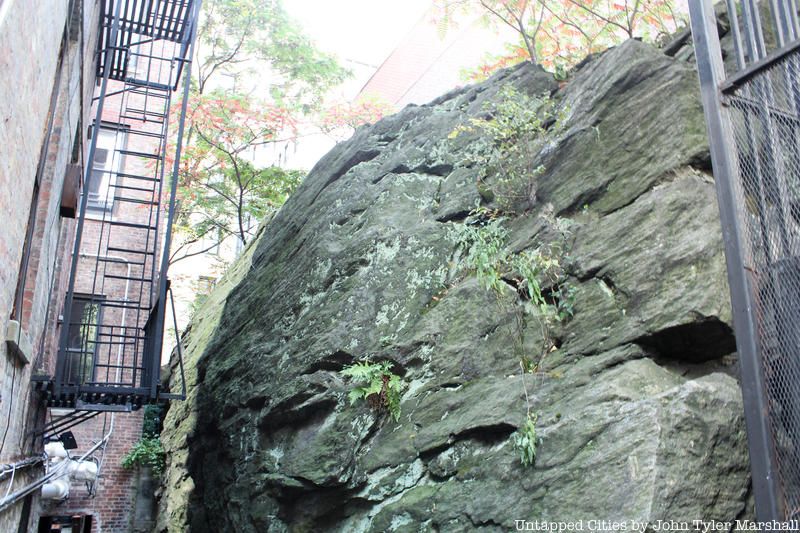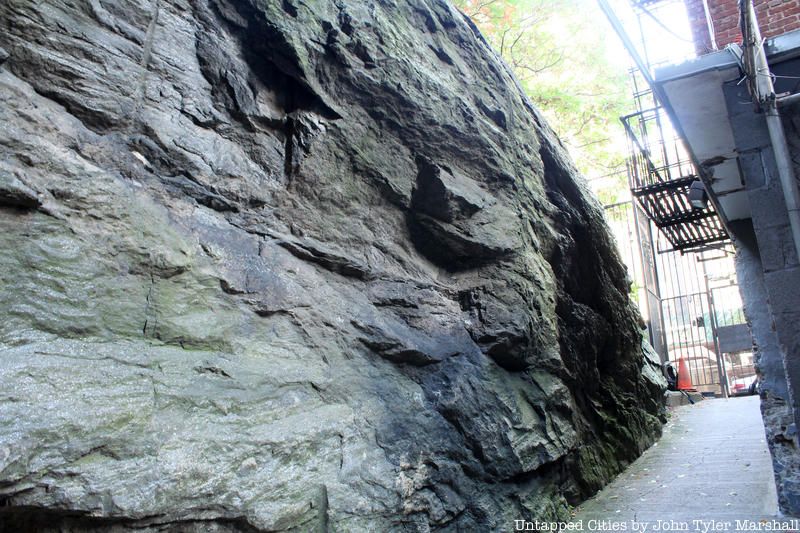Last Chance to Catch NYC's Holiday Notalgia Train
We met the voices of the NYC subway on our nostalgia ride this weekend!


A few weeks ago, news broke that a giant rock outcropping in Inwood was for sale for almost $3 million. There are a lot of places where you can still see Manhattan schist up close in New York City, but occurrences within the street grid are certainly rare. Another one of those spots is in Morningside Heights, where a huge section of schist is squeezed between a stately 1916 walkup building and a series of row houses built around at the turn of the century, all which are owned by The Trustees of Columbia University. At about 30 feet tall, the “Rat Rock,” as some locals have called it, is roughly the same height as the Inwood rock, but not nearly as wide. It is definitely the more dramatic of the settings, nearly crashing into the fire escapes and almost touching the wall of the next door townhouse.

A gate encloses the rock along 114th Street with foreboding signs in red: “GATE MUST REMAIN CLOSED AT ALL TIMES” AND “USE 113TH STREET SERVICE ENTRANCE.” There is no separate lot for it on the New York City building and tax maps, it’s technically part of the lot at 2915 Broadway, with the residential entrance on 114th Street and Book Culture in the retail along Broadway. But the building is connected to the buildings in the lot behind, also owned by Columbia, hence the shared service entrance. The narrow walkway descends towards 113th Street into the basement of the buildings.

This rock was the subject of a 2000 article in the New York Times and a piece last year by Gothamist. But now that there’s an active precedent, the rock for sale up in Inwood, could the Morningside “Rat Rock” be re-evaluated?
In 2000, the Times noted that “the lot and development rights are incredibly valuable, but removing the rock could cost hundreds of thousands of dollars.” Former Vice President of Institutional Real Estate at Columbia University told the newspaper, “‘When the row houses were built around it in 1896, leaving the rock was no big deal because there were hundreds of acres to develop. But now, it’s just this huge ugly rock in the middle of our neighborhood.” Taking a different tack, Andrew Dolkart, Professor of Historic Preservation at Columbia University Graduate School of Architecture, Planning and Preservation, told the Times, that “Rat Rock is ”an extraordinary survivor” because it ”hints at the geology of the city.”Next, check out 10 more places to see Manhattan schist in NYC.
Subscribe to our newsletter